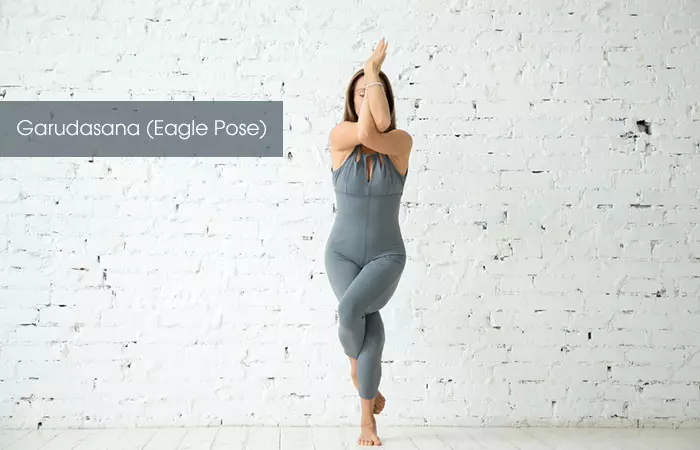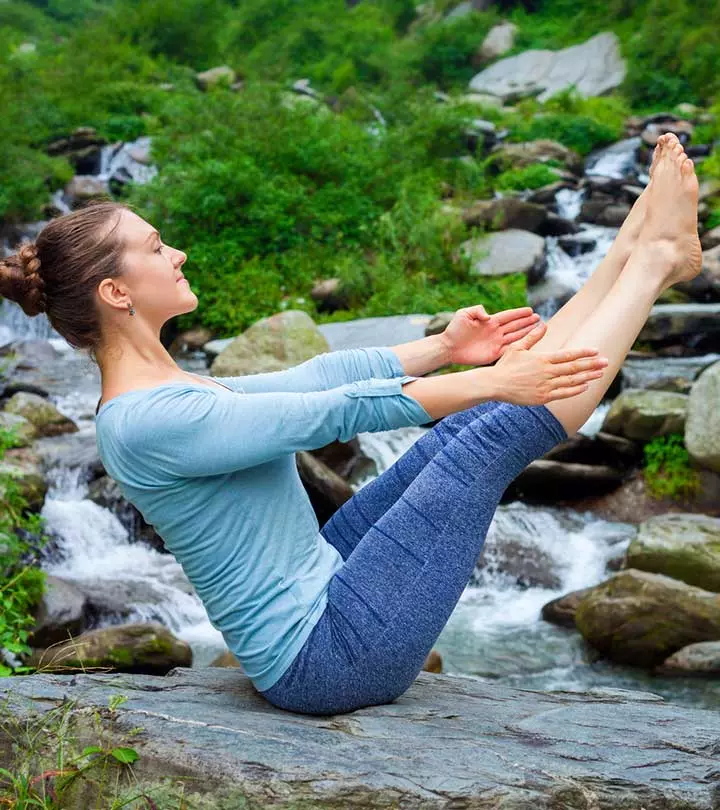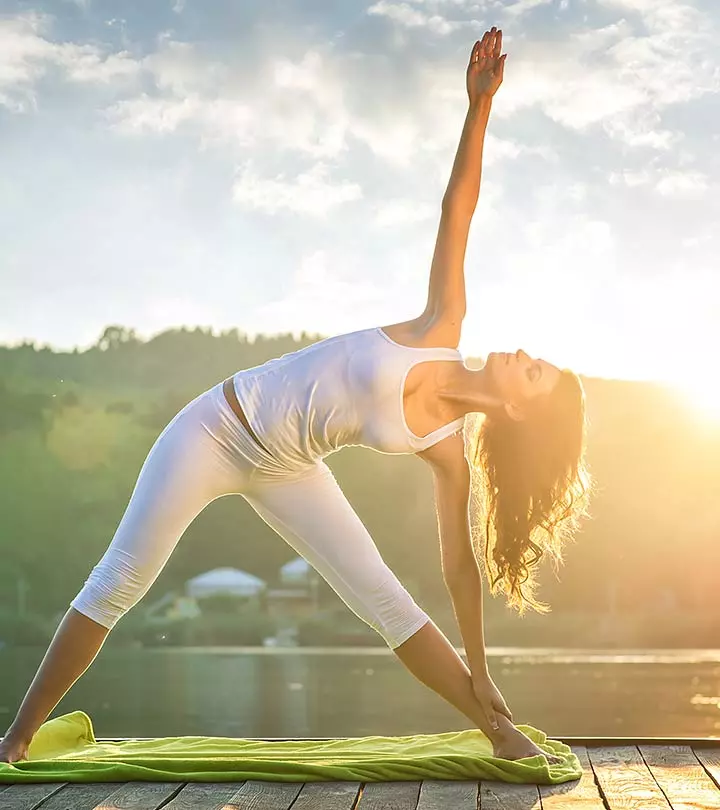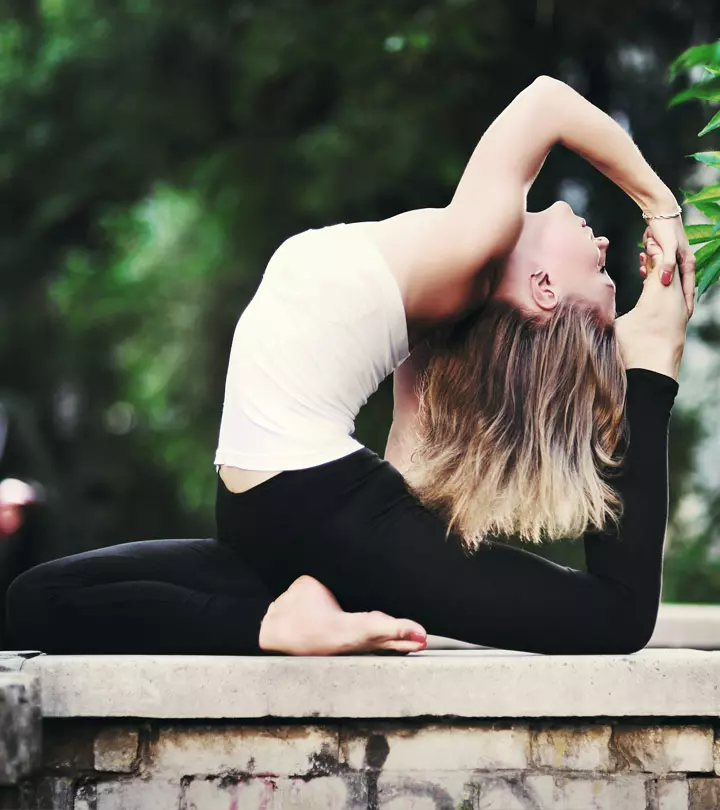7 Effective Baba Ramdev Yoga Asanas For Knee Pain
Give your knees some relief with these asanas that offer many health benefits.

Image: Istock
Knee pains can be excruciating as you get older. If you are bogged down by them and are looking for relief, you have come to the right place. In this article, we have listed the seven best Baba Ramdev yoga asanas for knee pain management. Besides improving your knees, these yoga poses will relax your body and mind and care for various other ailments when done with mindfulness. So, let us quickly dive into the article to understand these asanas, how they impact health and wellness, and how to do them.

Before that, let’s find out why yoga is ideal to cure knee pain.
In This Article
Baba Ramdev Yoga For Knee Pain
Knee pain may seem like a minor problem, but it can get to you. Doesn’t it? The swelling, redness, and ache will restrict you physically and lower your morale. This is a common problem affecting 19 percent of the world’s population. Its causes range from minor injuries to multiple medical conditions. The pain occurs in a particular area of the knee or throughout.
Vigorous physical movements aggravate the knee pain. What we need is a slow and controlled movement to lessen the pain. Yoga does this with gentle stretching, keeping the knees healthy and flexible. It also strengthens the muscles surrounding the knees. So, without further ado, try the carefully designed Baba Ramdev yoga asanas for knee pain mentioned below.
Key Takeaways
- Baba Ramdev recommends the following for knee issues: Virasana, Malasana, Makarasana, Utthita Parsvakonasana, Parsvottanasana, Trikonasana, and Garudasana.
- The asanas improve blood circulation, postures, and muscle strength.
- Perform the asanas on an empty stomach, early in the morning or evening, slowly and steadily. Hold the positions for 30 secs to 5 minutes, depending upon the asanas.
- Consult a personal trainer before beginning the regime in case of previously felt pain or discomfort.
Knee Pain Treatment By Baba Ramdev Yoga
1. Virasana (Hero Pose)

How It Helps: Virasana increases blood circulation in your legs and stretches the thighs and knees. The pose improves your body posture and removes tiredness in the legs.
About The Pose: Virasana or the Hero Pose is symbolic of the inner hero in you wanting to fight your mind and body problems. Practice Virasana in the morning as you can practice meditation in this pose and you don’t necessarily have to do it on an empty stomach. Virasana is a beginner level Hatha yoga asana. Hold the pose for 30 to 60 seconds.
Caution: If you feel any pain or discomfort while performing this pose, stop immediately. Consult a yoga instructor or physical therapist before trying this pose again. Avoid putting your weight on your knees during this pose. If you are a beginner, you can try this pose using a support prop like a bunch of blankets. Place the folded blankets under your pelvis. Then try the pose. Every week remove a blanket so the pose gradually becomes easier to perform.
To know more about the pose and how to do it, click here: Virasana
2. Malasana (Garland Pose)

How It Helps: Malasana makes your legs strong and lean and strengthens your knees, ankles, and thighs. It helps your body to excrete efficiently, keeping it clean and healthy and disallowing pressure to build up in the body as a result of improper excretion.
About The Pose: Malasana or the Garland Pose is essentially a squat and is one of the basic yoga asanas for beginners. This squat is a natural way of sitting down to excrete in the Eastern cultures. Practice Malasana in the morning or evening on an empty stomach. Hold it for 60 seconds.
 Quick Tip
Quick Tip3. Makarasana (Crocodile Pose)

How It Helps: Makarasana stretches your leg muscles, hence acting as a balm for knee pain. The pose has a calming and relaxing effect on your body and mind. It also controls hypertension.
About The Pose: Makarasana or the Crocodile Pose looks like a crocodile relaxing in water above the surface level when assumed. The pose is usually practiced at the end of a yoga session, so keep your stomach empty if you are preceding it with other asanas. Otherwise, it is not necessary to keep your stomach empty to practice Makarasana. The pose is a beginner level Hatha yoga asana. Hold it for 2 to 5 minutes.
To know more about the pose and how to do it, click here: Makarasana
4. Utthita Parsvakonasana (Extended Side Angle Pose)

How It Helps: Utthita Parsvakonasana increase your stamina. The pose strengthens and stretches your legs, knees, and ankles. It oxygenates muscles in your body that are often neglected and undernourished.
About The Pose: Utthita Parsvakonasana is a side angle stretch that helps your body get accustomed to stretching. Practice the pose in the morning on an empty stomach or the evening after a gap of 4 to 6 hours from your last meal. The pose is a beginner level Hatha yoga asana. Hold it for 15 to 30 seconds.
To know more about the pose and how to do it, click here: Utthita Parsvakonasana
5. Parsvottanasana (Pyramid Pose)

How It Helps: Parsvottanasana gives a sense of balance to your body. It calms your brain and strengthens your legs. The pose is good for the joints in your body, including the knee joint.
About The Pose: Parsvottanasana is also called the Pyramid Pose as it resembles a pyramid when assumed. It is a forward bend as well as a balancing pose. Practice it in the morning on an empty stomach and clean bowels. The pose is a beginner level Vinyasa yoga asana. Hold it for 30 seconds.
 Quick Tip
Quick TipTo know more about the pose and how to do it, click here: Parsvottanasana
6. Trikonasana (Triangle Pose)

How It Helps: Trikonasana burns fat, helping obese people lessen the pressure on the knees caused due to excessive weight. The pose energizes the body and helps increase focus. It strengthens the thigh muscles, helping cure knee pain.
About The Pose: Trikonasana, also called the Triangle Pose, is named so as it resembles a triangle when assumed. Unlike many other yoga asanas, Trikonasana has to be practiced with the eyes open. Do the pose in the morning on an empty stomach. Trikonasana is a beginner level Vinyasa yoga asana. Hold it for 30 seconds.
7. Garudasana (Eagle Pose)

How It Helps: Garudasana loosens your legs and increases their flexibility. The pose strengthens your calves and stretches the thighs. It also improves neuromuscular coordination.
About The Pose: Garudasana is named after the king of birds, Garuda, which is also the vehicle of Lord Vishnu in Hindu mythology. Practice Garudasana in the morning on an empty stomach and clean bowels. The pose is a beginner level Vinyasa yoga asana. Hold it for 15 to 30 seconds.
These Baba Ramdev yoga poses can significantly improve knee health, increase flexibility, and promote general well-being when done regularly. Additionally, they help in strengthening the surrounding muscles, which lessens knee strain. However, always listen to your body’s cues when practicing these asanas or any new physical exercises. Make little and gradual development, and get professional help when necessary to guarantee safe and efficient practice.
Infographic: 7 Effective Yoga Asanas To Relieve Knee Pain
Baba Ramdev asanas are highly beneficial for treating various ailments of the body, including muscle strain and knee pain. The infographic below lists 7 yoga asanas that are amazing for managing knee pain. Check it out for more information.
Some thing wrong with infographic shortcode. please verify shortcode syntaxKnee pain can get horrible if not nipped in the bud. The best way to go about treating it is to practice yoga poses that are easy on the knees and improves muscle strength in the region. The knee pain treatment by Baba Ramdev typically includes the seven yoga poses listed above that increase blood circulation in the legs, the endurance of the knees, calves, ankles, and thighs, and ease the weight burden on the legs by helping you lose some pounds. Include these yoga poses in your daily exercises and see the improvement in your fitness by yourself!
To know more about the pose and how to do it, click here: Garudasana
Now, let’s answer some common queries regarding yoga and knee pain.
Frequently Asked Questions
How often should I practice these asanas for effective knee pain relief?
Practice these poses 3 to 5 times a week to effectively relieve knee discomfort. Be consistent and give yourself break days for recovery. Lastly, include adequate warm-ups and easy stretches before each session, to get the most out of each session.
What precautions should I take while practicing yoga with knee pain?
Consult your doctor and yoga instructor. Make sure you don’t overstretch and listen to your body
Is yoga a permanent solution for knee pain?
Yes, yoga can be an ongoing solution for knee pain in its minor and initial stages.
Can Kapalbhati treat knee pain?
Kapalbhati focuses on breathing, which may help ease stress and reduce stiffness which may help treat knee pain.
Does Vajrasana reduce knee pain?
This asana helps improve the muscles around the knees. Therefore, it may help reduce the stiffness and pain around the knee.
Which yoga should not be done for knee pain?
Practicing lotus asana may not be a good idea if you have knee pain as it causes extreme flexion of the knees and strains them.
Why does the bridge pose hurt my knees?
The bridge pose may hurt your knees if you are putting too much force on your quad (group of muscles at the front of your thigh), instead of your glutes (muscles located in your buttocks).
Discover effective yoga asanas to alleviate knee pain naturally. This insightful video guides you through gentle poses to strengthen and relieve discomfort, offering holistic solutions for better mobility
Read full bio of Rakesh Rathod
Read full bio of Shirin Mehdi
Read full bio of Arshiya Syeda
Read full bio of Moksha Gandhi




























Community Experiences
Join the conversation and become a part of our empowering community! Share your stories, experiences, and insights to connect with other beauty, lifestyle, and health enthusiasts.